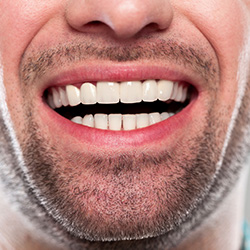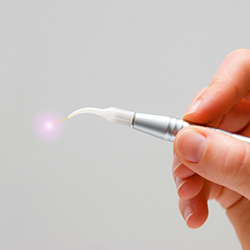Gum Disease Treatment Windermere
Achieve Optimal Gum Health
 Periodontal disease (more commonly known as gum disease) is an infection that starts out seeming harmless but can quickly grow out of control if patients don’t notice its presence in time. Thankfully, Windermere Center for Dentistry will keep an eye out for warning signs with a vigilant and professional eye. During regular checkups, Dr. Rapport will be sure to identify gum disease as early as possible and provide the rejuvenating, high-quality gum disease treatment in Windermere you need to improve your oral health. Contact our office today to schedule a visit – your smile will thank you!
Periodontal disease (more commonly known as gum disease) is an infection that starts out seeming harmless but can quickly grow out of control if patients don’t notice its presence in time. Thankfully, Windermere Center for Dentistry will keep an eye out for warning signs with a vigilant and professional eye. During regular checkups, Dr. Rapport will be sure to identify gum disease as early as possible and provide the rejuvenating, high-quality gum disease treatment in Windermere you need to improve your oral health. Contact our office today to schedule a visit – your smile will thank you!
What Are The Signs of Gum Disease?

- Gums that bleed when brushing/flossing
- Gums that seem overly red, tender to the touch, or noticeably swollen
- Excessive bad breath
- A receding gum line (your teeth will appear longer)
- A change in the way your bite or certain teeth feel
So what happens if we determine that you’re suffering from mild to advanced gum disease? Several treatment options are available, depending on the severity of your condition. They include:
Scaling & Root Planing

Scaling and root planing is one of the most common services provided to clear infection caused by gum disease, and this in-depth cleaning is composed of two distinct parts. The scaling portion of the treatment will involve our team carefully and précising removing accumulations of plaque from underneath the gum line, using special tools to do so in a comfortable fashion. Then, the root planing portion consists of us smoothing the rough surfaces that appear along the tooth surfaces and roots; these areas are big gathering grounds for harmful bacteria, and by smoothing them out, we can discourage future build-ups.
Soft Tissue Laser

When faced with more advanced cases of gum disease, state-of-the-art soft tissue laser may be the patient’s best option. Thankfully, this procedure is heads and shoulders above the use of traditional scalpels; instead, the focused wavelength helps us remove diseased tissue in a safe, comfortable, and instantly sterilizing manner. In fact, patients will find that their mouths hardly even bleed during the procedure, and they’re able to recover much faster afterward.
Antibiotic Therapy

Antibiotic therapy is typically recommended as a valuable addition to both scaling and root planing and soft tissue laser therapy. The medication is applied directly to the mouth in order to fend off dangerous bacteria that may have survived our initial removal attempt.